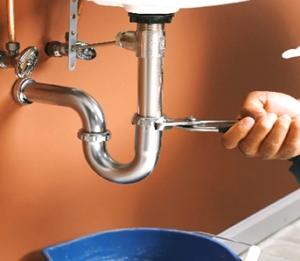 A home’s drainage system has an essential place in today’s modern day household. Drainage systems reduce the chance of flood and water damage by carrying unwanted water away from the home. Sewage draining systems work similarly, carrying unwanted waste away from the home to either a septic tank or a sewer, depending on the type of area you live in.
A home’s drainage system has an essential place in today’s modern day household. Drainage systems reduce the chance of flood and water damage by carrying unwanted water away from the home. Sewage draining systems work similarly, carrying unwanted waste away from the home to either a septic tank or a sewer, depending on the type of area you live in.
The draining systems we create mimic nature’s natural drainage systems. Typically, when water rains down, it seeps into the ground to either be evaporated back up into the atmosphere or eventually make its way into an underwater aquifer. The rest finds itself in rivers or creeks and eventually drains into certain bays or lakes. Once homes and businesses and all the countless facilities were built, we needed an effective method of draining to prevent large amounts of water from accumulating around infrastructure and causing structural damages or floods.
To answer this problem, we built the draining systems we use today. The drain system placed in your home often works entirely by gravity, as waste-water is flowed through a series of pipes. The water travels through these pipes and eventually makes its way into a main waste or vent stack that connects to the sewer line often running below your home’s foundation. Where the water goes once it leaves your property depends on where you live. The water could either run to a septic system, where it joins other waste, or a waste-water treatment facility where the waste-water is filtered rigorously and sent back into home’s piping systems.
Because the drainage systems in your home may seem simple because they use gravity, they are somewhat complex and have three parts, primarily vents, traps, and clean-out plugs. Vents allow airflow in your drainage system so the water is able to move through piping. Traps, or the ‘S’-shaped pipe you see below your sink drains out the water, while leaving some water behind. The water left behind prevents sewage and waste-water from coming back up the line by maintaining a constant pressured seal. The clean-out plugs allow a person to go reach into the trap and clean it out or unclog any blockages that may be preventing the drainage system from functioning properly.
If drainage systems are to work properly, all parts of the system must be fully functional, as they are all essential in the draining process. In addition to the specific parts working, your pipes cannot have any clogs or buildups of any kind, as this will also affect your draining systems performance. If there is a clog, you will easily be able to see the effects, as your water or waste may either drain very slowly or not at all. If you have a blockage in your pipes or have any concerns with your pipes at all, you can contact All Star Plumbing & Restoration services and we can unclog and clean your pipes, preventing future issues in the process.
Overall, drainage systems mostly use simple, yet effective engineering to properly drain waste-water and sewage away. If your drainage system is not functioning the way it should or breaks down completely, a small problem can quickly turn into a big one, as this could cause water damage, flooding, or waste cleanup. To avoid this, contact All Star Plumbing & Restoration drainage system services so we can fix your small problem before it becomes a big one throughout the Boise/Meridian area.





